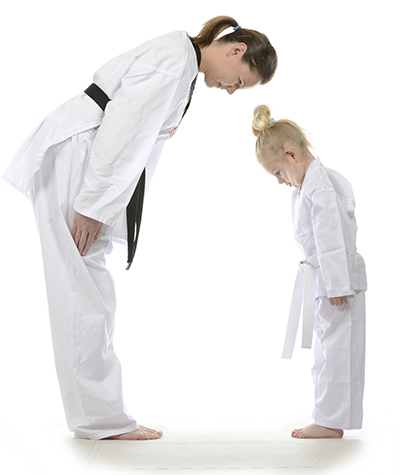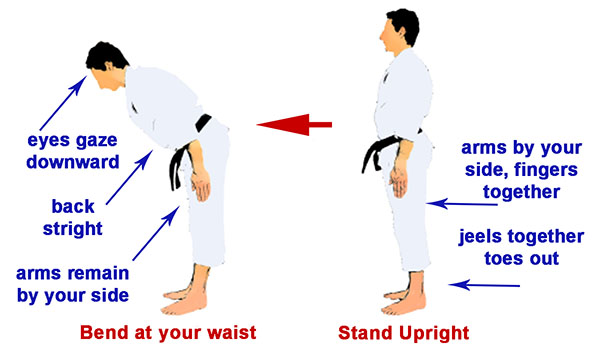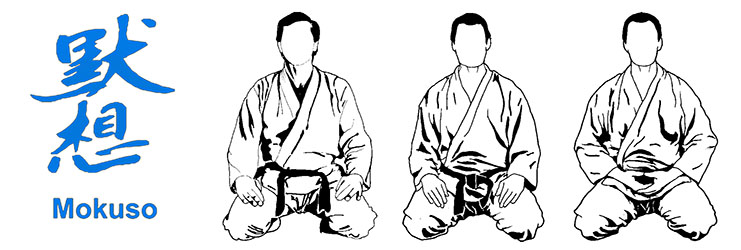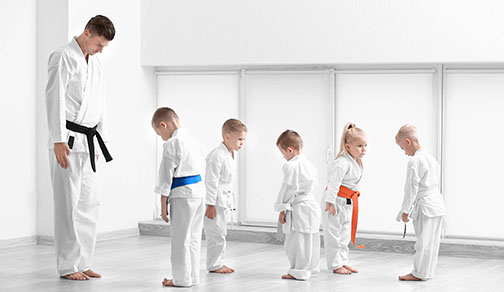Terms & Conditions
-
Hits: 6137

RESPECT, RESPECT, and RESPECT
and Peace Over Power
RESPECT: The first thing you learn in Karate is the “Bow.” In Martial Arts, the bow is a sign of respect. Respect means saying “please and thank you,” honoring a friend, helping out at home without your parents asking you to do so, looking at your parents and teachers in the eyes, telling your parents that you love them and following the rules.
SELF CONTROL: in Karate means never misusing your Martial Art skills unless you are forced to defend yourself.
Self-control also means controlling your emotions even if someone makes you feel angry. If someone asks you to do something that you know is not right (DRUGS, ALCOHOL AND/OR CIGARETTES) walk away. Say, «NO.» If your parents ask you to do something, you just DO IT.
SELF DISCIPLINE: in Karate is having respect for the Dojo and using what you learn in class constructively when outside of the Karate Studio.
Self-discipline means being respectful, not being late and doing your homework without your parents reminding you. It also means that you need to keep your body clean, eat healthy food and giving 110% effort in everything that you do.
If you follow these rules of behavior, it will help you to become a better person as well as a leader.
KARATE BOW (Rei): Bowing in martial arts is a very simple act but one that is extremely important.
 Bowing between Instructors and students shows the respect felt among themselves and towards each other. It also shows you care. When you bow, you are not bowing to that person, but respecting the knowledge and skill that the person has acquired, and to the rank that they have attained. Bowing is about heart and feeling and it’s about what is said without speaking. It is about paying respect.
Bowing between Instructors and students shows the respect felt among themselves and towards each other. It also shows you care. When you bow, you are not bowing to that person, but respecting the knowledge and skill that the person has acquired, and to the rank that they have attained. Bowing is about heart and feeling and it’s about what is said without speaking. It is about paying respect.
Bowing also symbolizes humility. When you bow to a higher grade you are acknowledging they know more about martial arts than you. Being humble is a very important trait to have in every aspect of your life and every time you bow you should remind yourself to be modest and always think of others. It is very good for keeping your ego in check.
When to bow:
- ENTERING TO ACADEMY
- ENTERING & EXITING THE DOJO (a room or hall in which karate is practiced)
- TO YOUR INSTRUCTOR
- AT THE START/END OF THE LESSON
- WHEN TRAINING WITH A PARTNER
- LEAVING THE ACADEMY
LATENESS: Try not to be late. If you are late, bow in, then quietly kneel near the entrance. Wait until the instructor acknowledges you. Then bow kneeling, get up, and quickly join the group. If you arrive just as everyone is kneeling at the beginning, don’t move, don’t make any noise, just wait until warming-up starts, and bow in as described above.
OPENING SEQUENCE: When you hear “Line up!” or “One line!”, stand shoulder to shoulder facing the front of the dojo, in rank order. Try to line up so that the instructor is right in the middle of the line. If the class size is big, the senior student may ask you to form more than one line, in which case, you should try to line up so that the lines are approximate of the same length.
 CLOSING SEQUENCE: Same as the opening sequence, except that after Mokuso, (we take about one minute to empty our minds and focus on our breathing) there is a recitation of the dojo Kun.
CLOSING SEQUENCE: Same as the opening sequence, except that after Mokuso, (we take about one minute to empty our minds and focus on our breathing) there is a recitation of the dojo Kun.
Repeat after the higher belt, loudly (but not so loud that your voice stands out) and in unison. During the final bow to the instructor, you can say “Arigatou Gozaimashita,” which means “Thank you.” “Thank you” in English is okay, too. In the end, the instructor will get up. Wait until the person on your left bows and gets up before you do the same.
CLEAN-UP: Before the end of class, there is usually some sort of cleaning of the dojo and students should put all the equipment used in place. During this time, actively participate to whatever extent you can. Don’t sit back and stretch when others are still cleaning.
General Etiquette Guidelines During Training
Most importantly, the moment class starts, your min should be on karate and on trying to improve your own technique. Concentrate, give spirited Kiai, don’t talk unnecessarily, and practice hard! (This is under “etiquette” because doing otherwise would be disrespectful to the instructor, as well as to yourself.
Don’t wear jewelry, watches, something sharp, etc.
Don’t chew gum or candy.
Whenever you’re told to move from one part of the room to another, do it quickly (i.e., run or trot, at least). Also, don’t pass in front of anyone – go behind and around.
Whenever you’re asked to stand back or sit back and watch, do so in a normal standing or kneeling position, silently, without leaning on walls or distracting others. If you’re ever in a kneeling position and you’re uncomfortable, it’s generally okay to bow and then switch to sitting cross-legged.
Whenever you stand from a sitting position, switch to kneeling, bow, then stand.
If you ever need to leave a class early, let the instructor know beforehand.
Every time you get a new partner for any exercise, bow.
Every time you’re about to switch partners, bow to your old partner before moving on to the next.
Don’t make overt displays of how tired you are, no matter how tired you are.
If you’re ever asked to count, count in the Japanese language, but make the counts short, sharp, and spirited.
Follow the normal rules of etiquette that apply.

Other things you should know
Don’t say any words when you Kiai. “Kiai” itself, being a Japanese word should NOT be a Kiai. Common Kiai include “Ya!” and “Ei!”
Don’t be afraid of Kiai If you have a strong Kiai, it will often spur others to work harder, as well. The overall tone of a class is set by the level of spirit of the class, which can be raised with better Kiai. On the other hand, if your spirit is poor or your Kiai weak, you might bring down the class spirit.
Do not hesitate to ask senior students and instructors for help before or after class. Time permitting, you should try to learn kata outside of class so that during class, the instructor can spend more time making comments about your technique rather than what move comes next.
You’ve noticed that karate practice is not as easy as it looks and you must get to practice at home as well as in class.
After all, you work hard all day and are paying money for Karate lessons so you naturally want to be successful. Here are two simple tips to get them to practice at home.
1. Create a designated area at home for practice
2. Agree on a set practice time each day
If you haven’t learned enough or practiced enough, you may not be able to pass the exam. You may also be able to pass two exams at the same time because of a lot of practice. So don’t forget how important is practice at home can be to your success.

